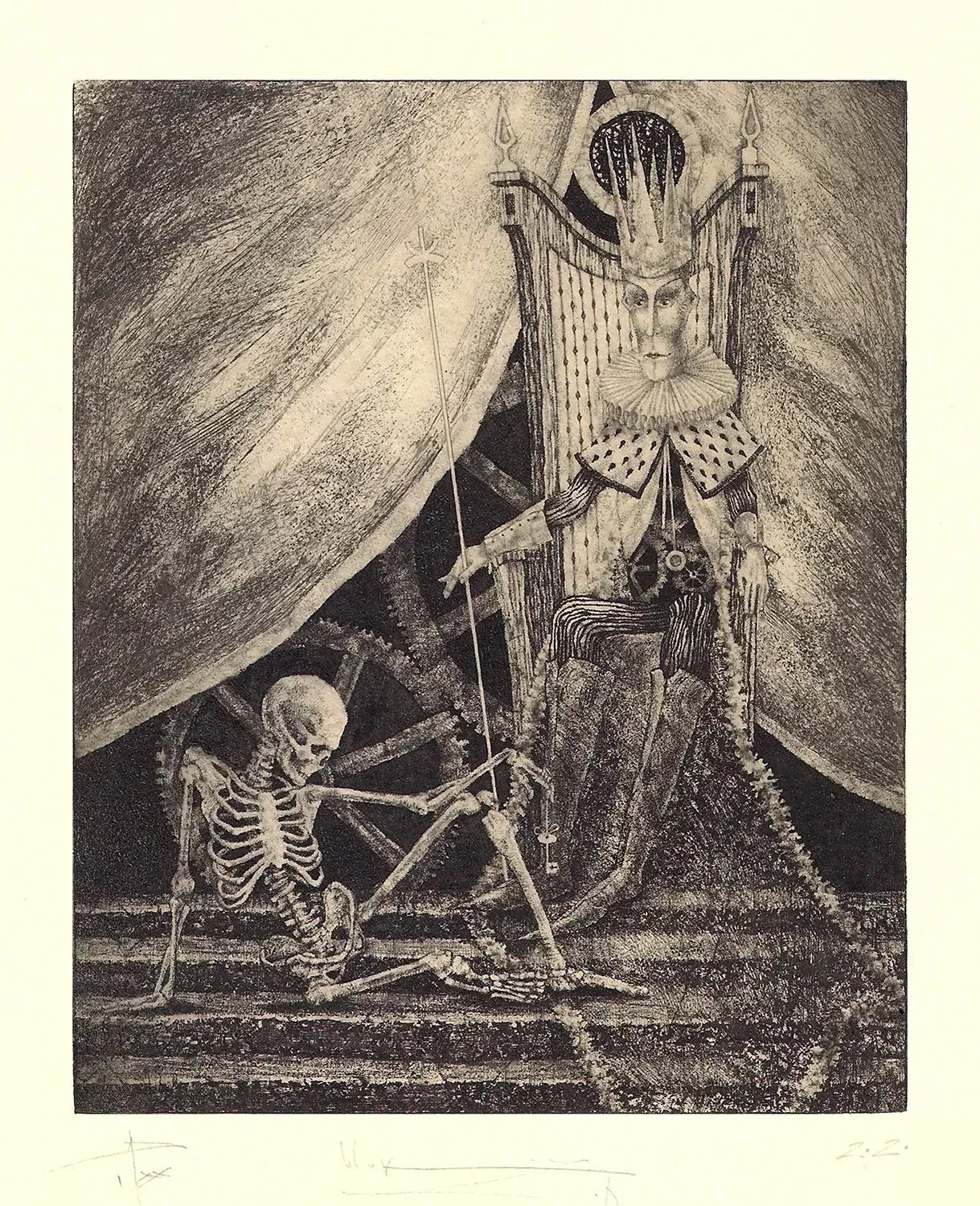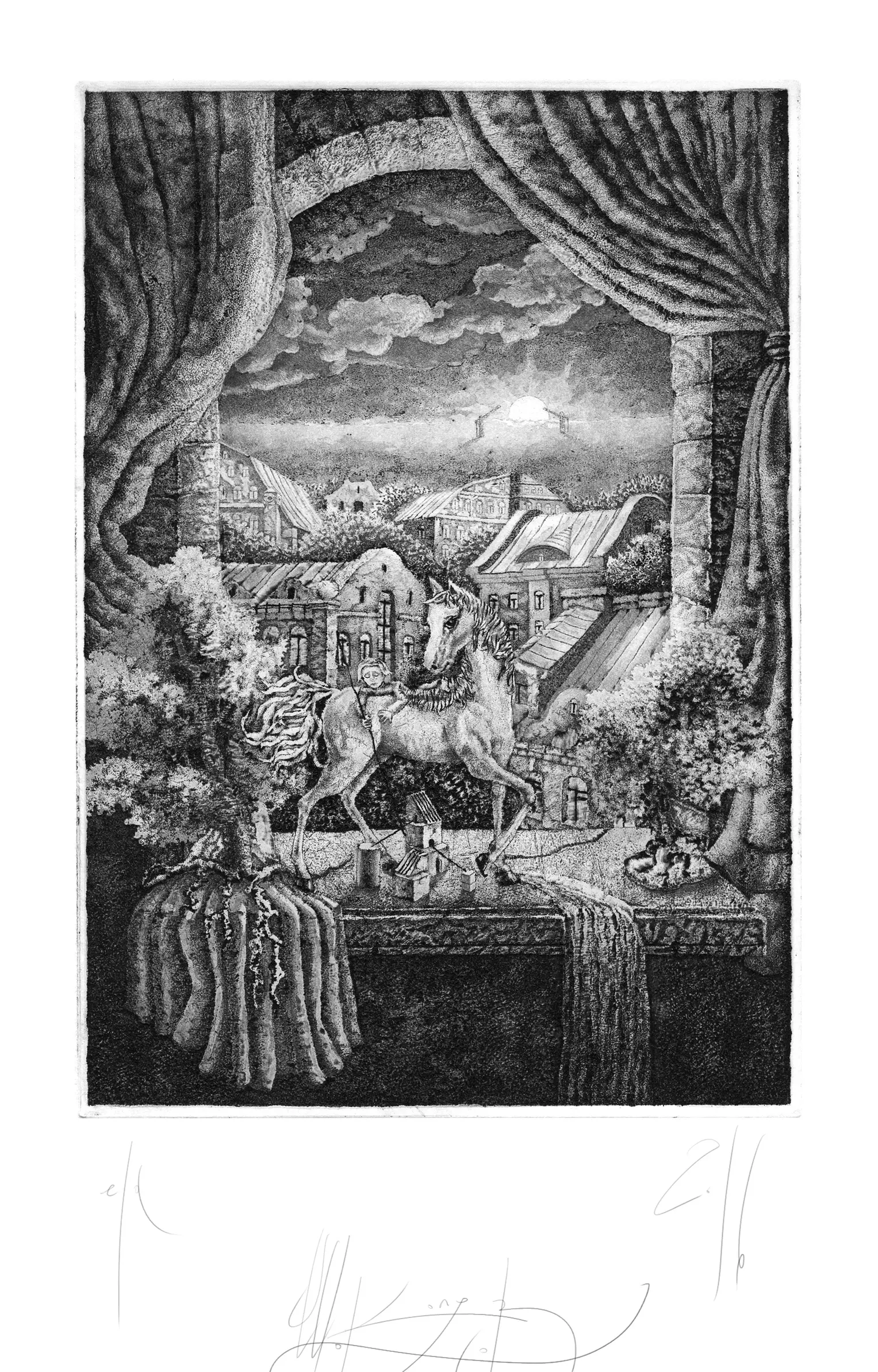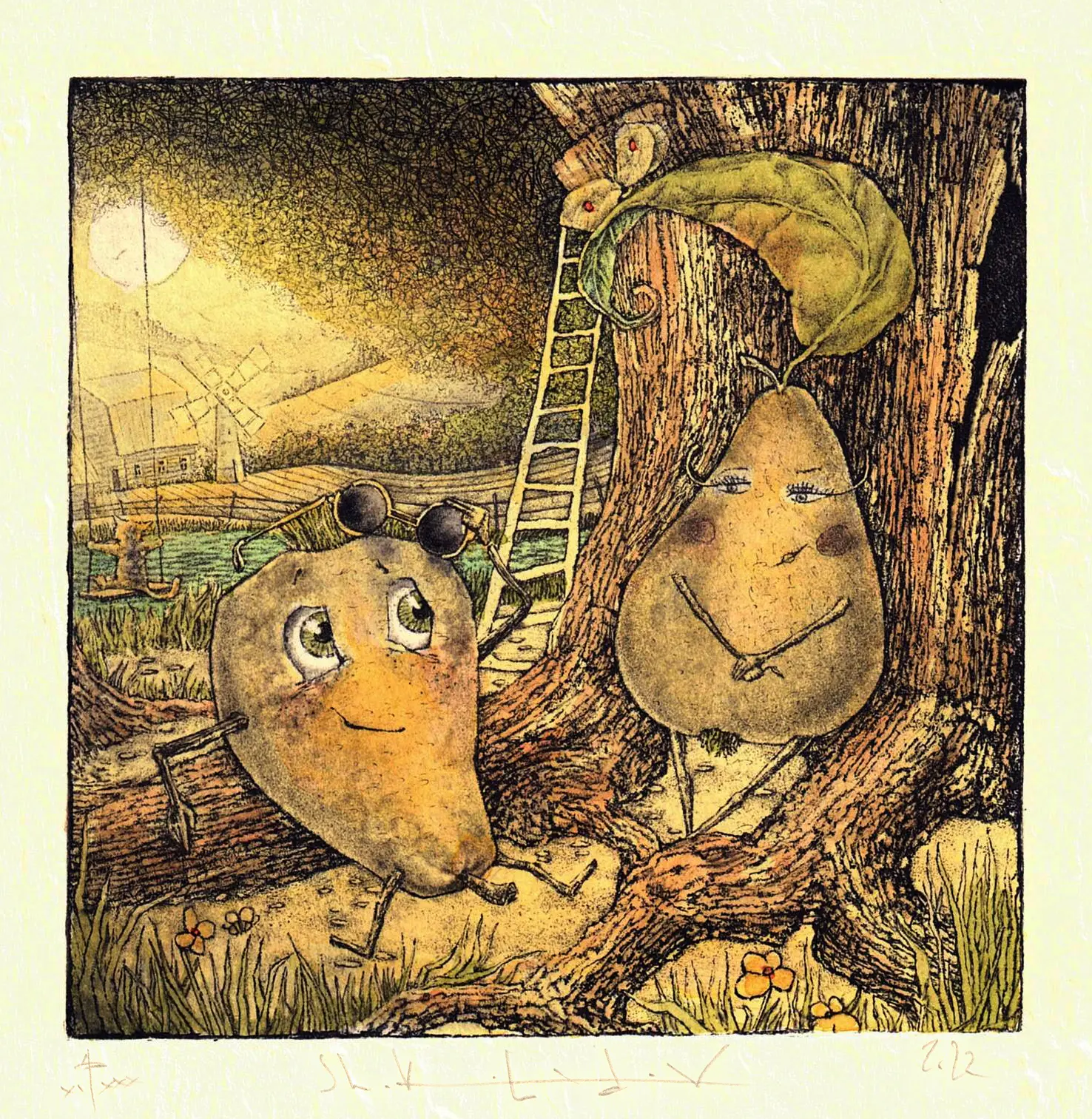King and Joker
Technique:
ETCHING
Picture size
5¹/₈ x 4⁹/₆₄ in
13 x 10.5 cm
Paper size
11¹³/₁₆ x 8¹⁷/₆₄ in
30 x 21 cm
Year
2020
Edition
of 20
Description
King and Joker presents a powerful allegory of fate, power, and the delicate balance between control and chance. The figure of the king, seated on an imposing throne, exudes authority. He holds a scepter, symbolizing his control over destinies, yet behind his regal appearance lies a clockwork mechanism, suggesting that even his reign is part of a larger system, dictated by unseen forces.
The Joker, a skeletal figure sprawled on the ground before the king, contrasts sharply with the monarch’s grandeur. Despite his lowly position, the Joker holds a key—a symbol of possibility and unpredictability. The key suggests that, while the king appears to be in control, the Joker, the embodiment of chance and chaos, still holds the power to disrupt the established order. His bony fingers toy with the key, hinting at the unpredictability of life, where even the most powerful rulers are not immune to the whims of fate.
The backdrop of gears and mechanisms behind the curtain reinforces the idea that both figures are part of a larger cosmic machine. The king may sit in a position of power, but he, too, is subject to the turning of the wheels behind the scenes. The Joker, though seemingly insignificant, represents the moments when the unexpected occurs, when the key turns and everything changes.
King and Joker explores the tension between control and chaos, between authority and randomness. It invites viewers to reflect on the duality of life—where structure and unpredictability coexist, and where even those who seem to hold the reins of destiny are, in the end, part of a much larger game.
King and Joker
Technique:
ETCHING
Picture size
5¹/₈ x 4⁹/₆₄ in
13 x 10.5 cm
Paper size
11¹³/₁₆ x 8¹⁷/₆₄ in
30 x 21 cm
Year
2020
Edition
of 20
Description
King and Joker presents a powerful allegory of fate, power, and the delicate balance between control and chance. The figure of the king, seated on an imposing throne, exudes authority. He holds a scepter, symbolizing his control over destinies, yet behind his regal appearance lies a clockwork mechanism, suggesting that even his reign is part of a larger system, dictated by unseen forces.
The Joker, a skeletal figure sprawled on the ground before the king, contrasts sharply with the monarch’s grandeur. Despite his lowly position, the Joker holds a key—a symbol of possibility and unpredictability. The key suggests that, while the king appears to be in control, the Joker, the embodiment of chance and chaos, still holds the power to disrupt the established order. His bony fingers toy with the key, hinting at the unpredictability of life, where even the most powerful rulers are not immune to the whims of fate.
The backdrop of gears and mechanisms behind the curtain reinforces the idea that both figures are part of a larger cosmic machine. The king may sit in a position of power, but he, too, is subject to the turning of the wheels behind the scenes. The Joker, though seemingly insignificant, represents the moments when the unexpected occurs, when the key turns and everything changes.
King and Joker explores the tension between control and chaos, between authority and randomness. It invites viewers to reflect on the duality of life—where structure and unpredictability coexist, and where even those who seem to hold the reins of destiny are, in the end, part of a much larger game.















